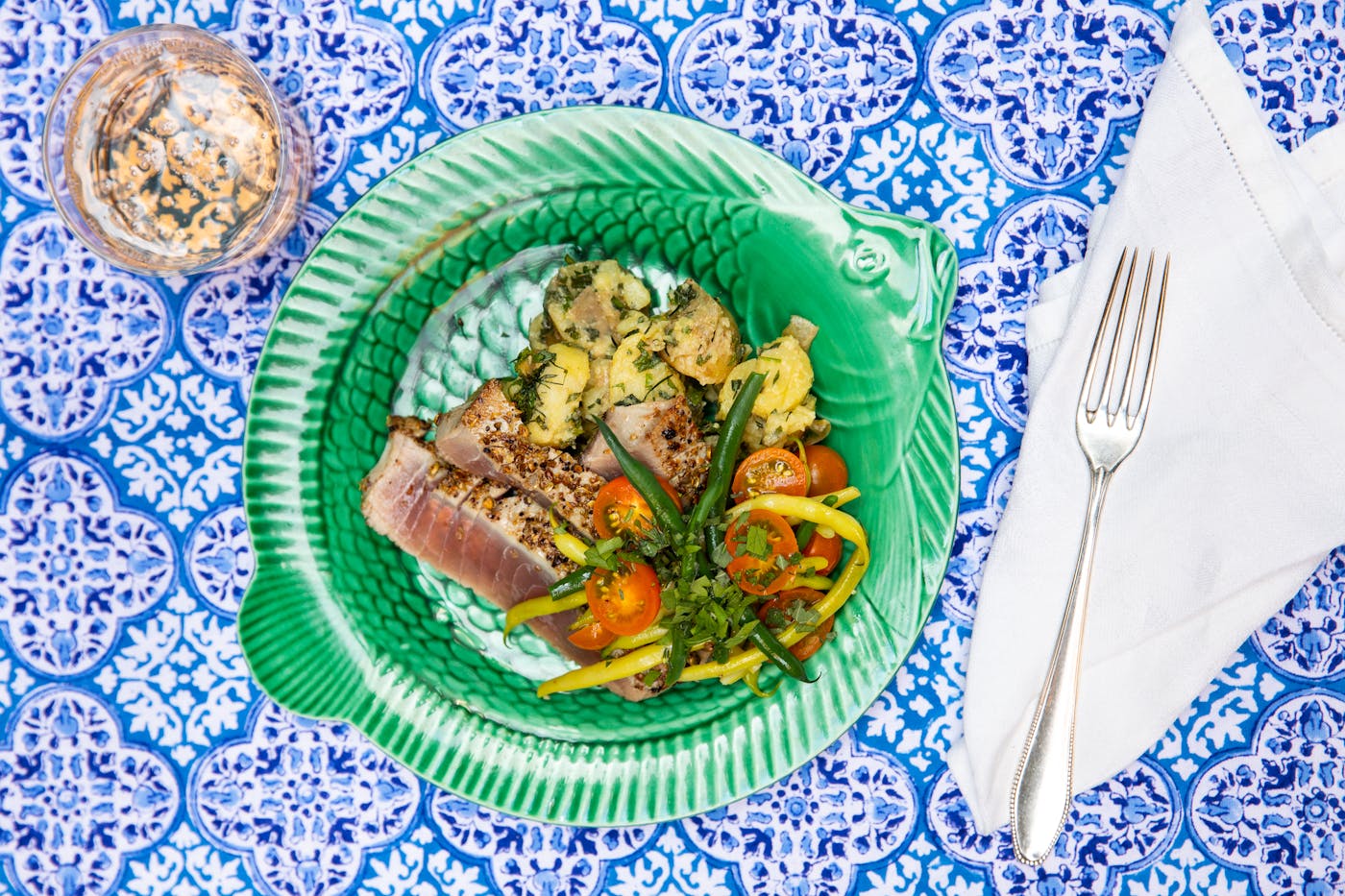Shared by Peter Hoffman

Two years ago this summer, Back Forty West, a beloved restaurant in New York’s Soho neighborhood, closed sending a twinge through the city’s dining community. It was the last of three restaurants once helmed by chef Peter Hoffman, a pioneer in the farm-to-table movement on the East Coast.
Today, Peter is living only a few blocks away from where the restaurant stood, writing a memoir and, of course, cooking. Earlier this summer, he welcomed us for an early evening meal in his backyard, serving his mother’s German potato salad and his father’s favorite cold and sour sorrel soup, schav. Peter added his own summer bean salad and seared spiced tuna to the menu, and finished the evening with his grandmother’s summer fruit tart. It’s the perfect menu to enjoy when farmers market stands are bursting with the bounty of summer, as they are right now.
Peter knew he wanted to spend his life in the kitchen when he was 16. “One day, there was a photograph of Paul Bocuse on the cover of the New York Times magazine section looking over an incredible array of farmers market [produce],” he recalled. “And I was like: ‘That’s it.’”
His start in the kitchen came before that, though, working alongside his mother Lilo, a German immigrant who came to America in 1934. When he was little, he would set up on a stool to shell peas or clip beans and work alongside her. “We had a galley kitchen and she’d be in front of the stove. That space was hers,” he recalled.
As the two cooked, “we’d talk and it was actually a really special time to just have her attention and be able to talk about things, sometimes hard things, when you don’t necessarily want to look someone in the eye,” he says.
The cooking in Peter’s childhood kitchen wasn’t particularly connected to Jewish tradition. For that, he went to Zabar’s to buy babka and smoked fish. “I grew up in an atheistic family….But, it was very clear that we were Jewish,” he says. “My mom’s story was front and center. When I was 7, we went on a trip to Germany. It was her first time back and I didn’t understand. She was deeply traumatized by it.”
Still, recipes like German potato salad, splashed with vinegar instead of mayonnaise, were part of the family’s summer menu that the pair would make mid-day and pop into the fridge. There was no air conditioner in their house, tucked into the woods of northern New Jersey, but “we had this wonderful outdoor patio, so most of the summer, if the weather was good, dinner was outside,” Peter said.
Schav, a cold, sour, and refreshing soup joined the summer cooking rotation when the family bought a place in the Berkshires. Peter’s father Jules, spotted wild sorrel and suggested making a batch. “It was kind of recapturing his childhood,” explained Peter.
Peter isn’t sure where the recipe came from. His paternal grandmother was the daughter of German immigrants, and his grandfather escaped Russian pogroms, moving to the U.S. in the early 20th century. But, “I don’t think I ever ate it at my paternal grandmother’s house,” Peter said. Still, “it’s a flavor [my dad] had a real lust for…[he] worked outside mowing the pastures, and he would come inside dripping with sweat and drink the schav straight out of the jar in the fridge.”
To round out our meal together, Peter served a bean salad that captures the season with sungolds and fresh herbs, and tuna spiced with anise and coriander. To finish it all, he reached for a muerbeteig, a German tart recipe from his maternal grandmother Leni, who lived nearby in New Jersey when he was growing up. “She would change up the fruit. It could be blueberries, blueberries and peaches, or apricots, whatever was in season,” Peter explained. This evening, he used cherries.
Leni lent him money to open his first restaurant Savoy, and fittingly, Peter served this recipe at the restaurant in her honor. It was at his restaurants that Peter found his way to a new perception of Jewish food and Judaism.
Despite the family’s atheistic leaning, Passover played a poignant role. “We were always connecting the story to the story of liberation of all kinds of people,” Peter explained. The tradition continued at the restaurants where he hosted Seders with recipes from Jewish communities around the world.

